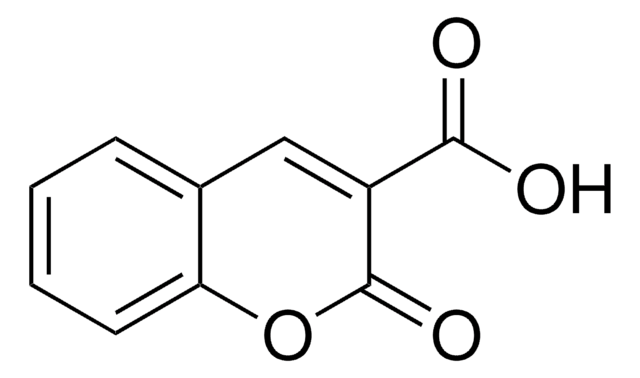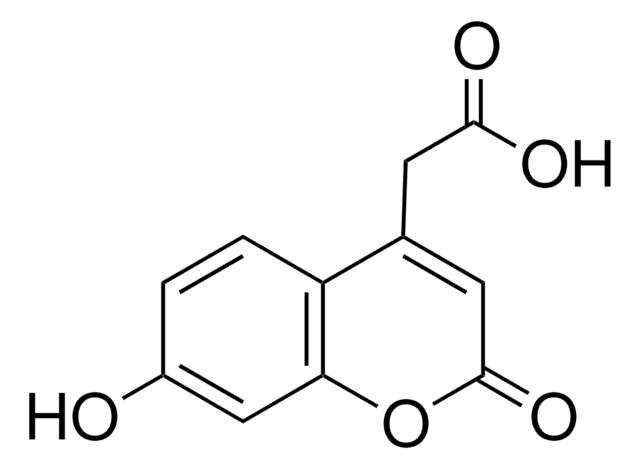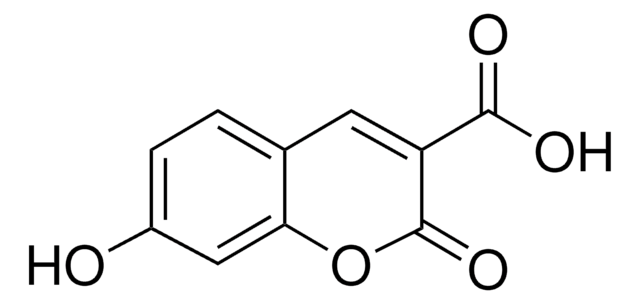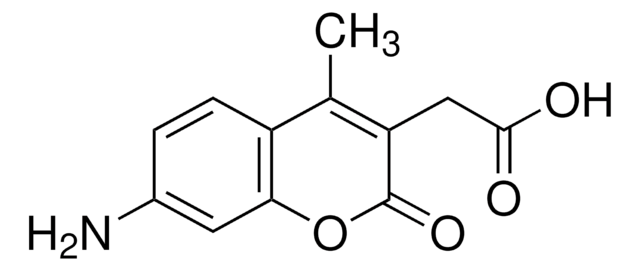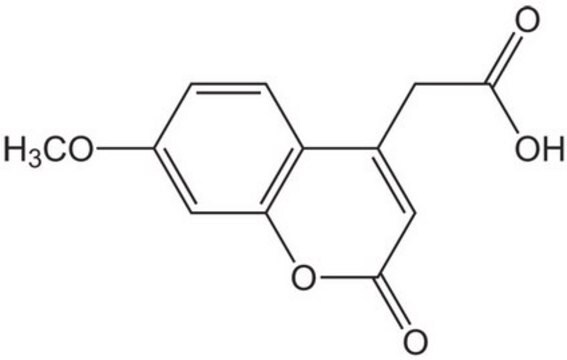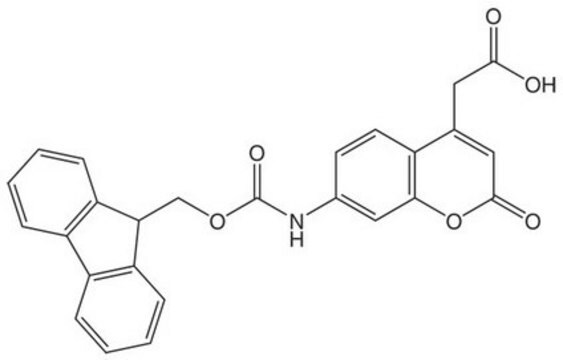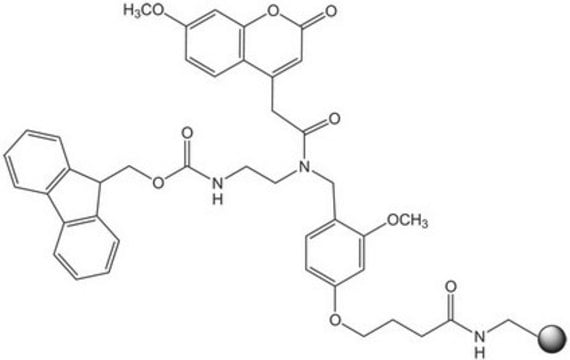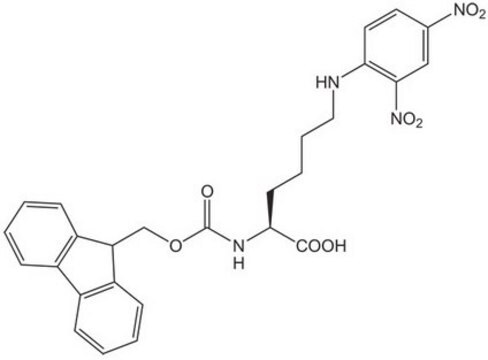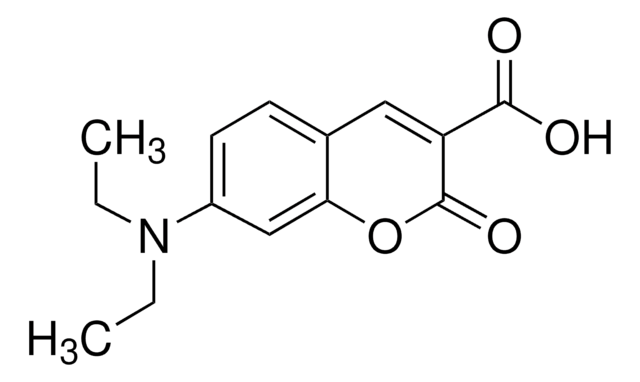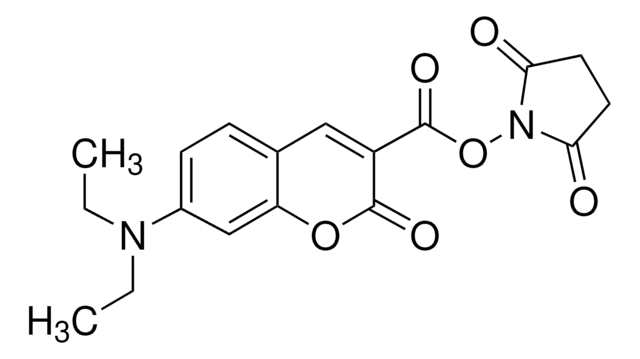235199
7-Methoxycoumarin-4-acetic acid
97%
Synonym(s):
7-Methoxy-2-oxo-2H-1-benzopyran-4-acetic acid
Sign Into View Organizational & Contract Pricing
All Photos(2)
About This Item
Empirical Formula (Hill Notation):
C12H10O5
CAS Number:
Molecular Weight:
234.20
MDL number:
UNSPSC Code:
12352100
PubChem Substance ID:
NACRES:
NA.22
Recommended Products
Assay
97%
mp
193 °C (dec.) (lit.)
solubility
DMF: soluble 50 mg/mL, clear, colorless to yellow
functional group
carboxylic acid
ester
SMILES string
COc1ccc2C(CC(O)=O)=CC(=O)Oc2c1
InChI
1S/C12H10O5/c1-16-8-2-3-9-7(4-11(13)14)5-12(15)17-10(9)6-8/h2-3,5-6H,4H2,1H3,(H,13,14)
InChI key
ZEKAXIFHLIITGV-UHFFFAOYSA-N
Looking for similar products? Visit Product Comparison Guide
Application
7-Methoxycoumarin-4-acetic acid has been used:
- as fluorescent probe in preparation of two novel LysB29 selectively labelled fluorescent derivatives of human insulin
- in the preparation of cell-penetrating peptide transportan 10 (tp10)
- as fluorescent label for peptides
Storage Class Code
11 - Combustible Solids
WGK
WGK 3
Personal Protective Equipment
dust mask type N95 (US), Eyeshields, Gloves
Choose from one of the most recent versions:
Already Own This Product?
Find documentation for the products that you have recently purchased in the Document Library.
Customers Also Viewed
Lindsay E Yandek et al.
Biophysical journal, 92(7), 2434-2444 (2007-01-16)
The mechanism of the interaction between the cell-penetrating peptide transportan 10 (tp10) and phospholipid membranes was investigated. Tp10 induces graded release of the contents of phospholipid vesicles. The kinetics of peptide association with vesicles and peptide-induced dye efflux from the
Stereospecific synthesis ofl-2-amino-3-(7-methoxy-4-coumaryl) propionic acid, an alternative to tryptophan in quenched fluorescent substrates for peptidases.
Knight CG.
Lett. Pept. Sci., 5(1), 1-4 (1998)
Alice Ciencialová et al.
Journal of peptide science : an official publication of the European Peptide Society, 10(7), 470-478 (2004-08-10)
The preparation and characterization of two novel LysB29 selectively labelled fluorescent derivatives of human insulin are described. Two probes were chosen: 4-chloro-7-nitrobenz-2-oxa-1,3-diazole (NBD) and 7-methoxycoumarin-4-acetic acid (MCA), which have a relatively small, compact structure and are able to react with
Tianshu Xiao et al.
Nature structural & molecular biology, 28(2), 202-209 (2021-01-13)
Effective intervention strategies are urgently needed to control the COVID-19 pandemic. Human angiotensin-converting enzyme 2 (ACE2) is a membrane-bound carboxypeptidase that forms a dimer and serves as the cellular receptor for severe acute respiratory syndrome coronavirus 2 (SARS-CoV-2). ACE2 is
Ditlev Birch et al.
Biochimica et biophysica acta, 1859(12), 2483-2494 (2017-09-19)
Cell-penetrating peptides constitute efficient delivery vectors, and studies of their uptake and mechanism of translocation typically involve fluorophore-labeled conjugates. In the present study, the influence of a number of specific fluorophores on the physico-chemical properties and uptake-related characteristics of penetratin
Our team of scientists has experience in all areas of research including Life Science, Material Science, Chemical Synthesis, Chromatography, Analytical and many others.
Contact Technical Service